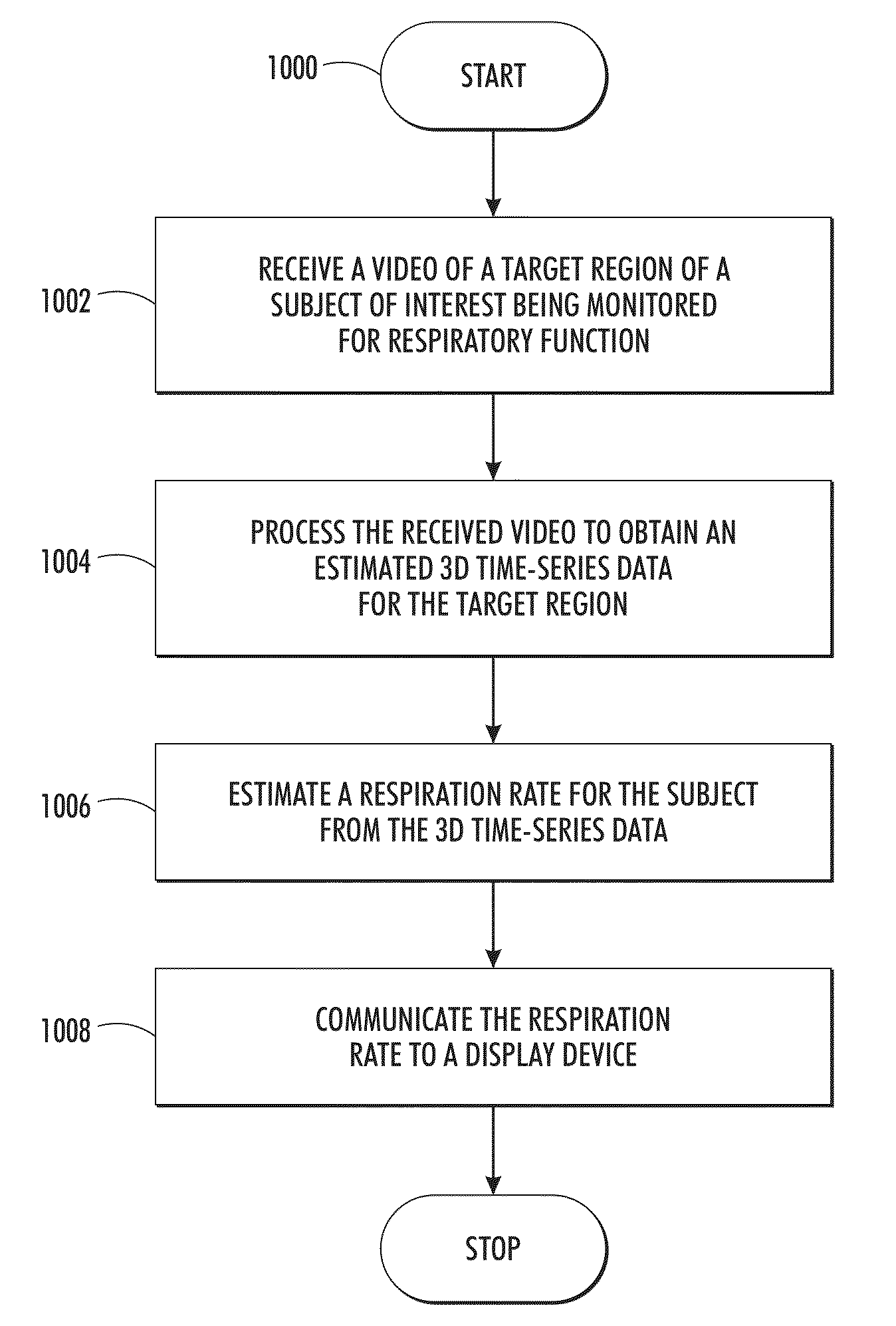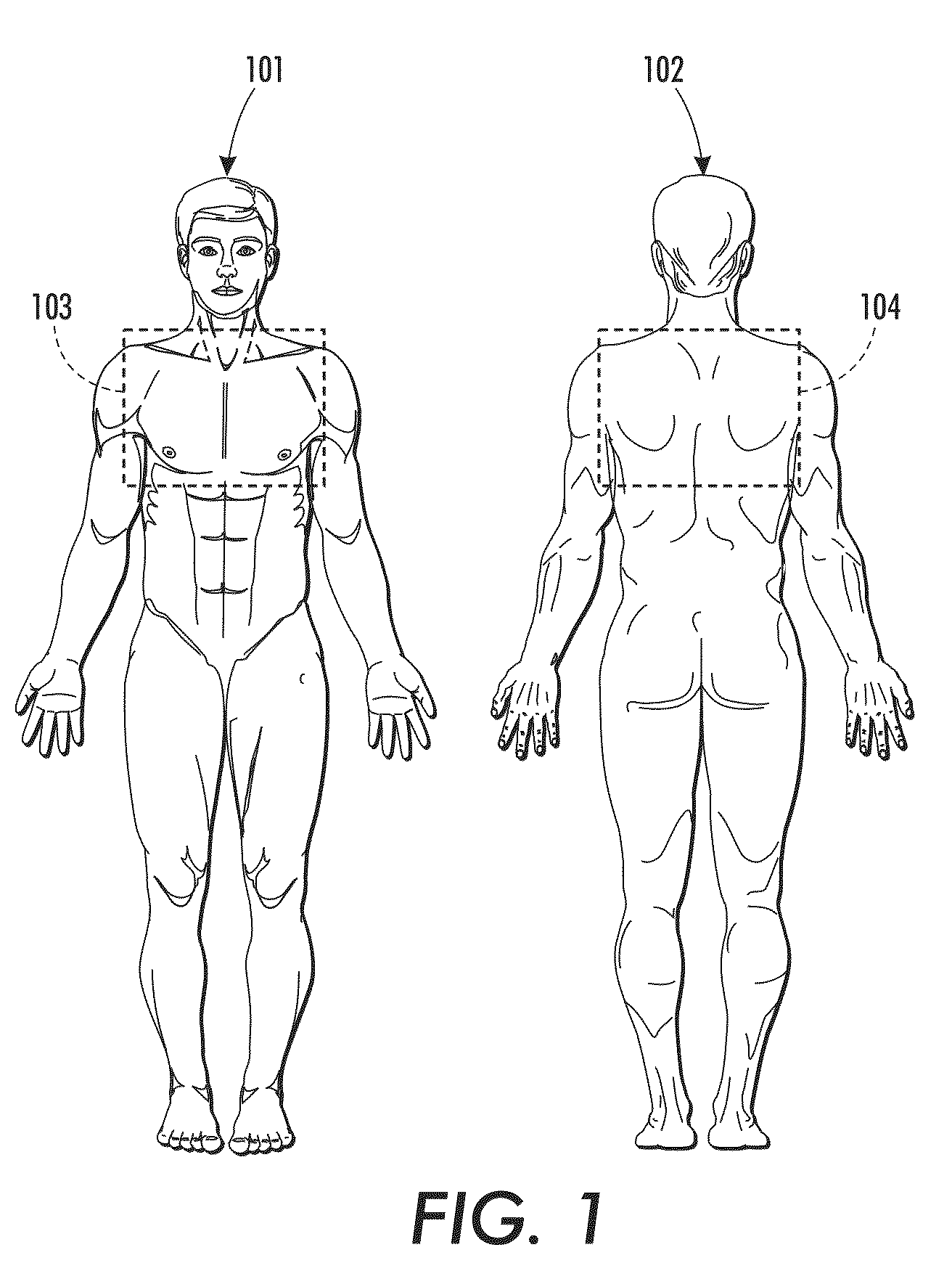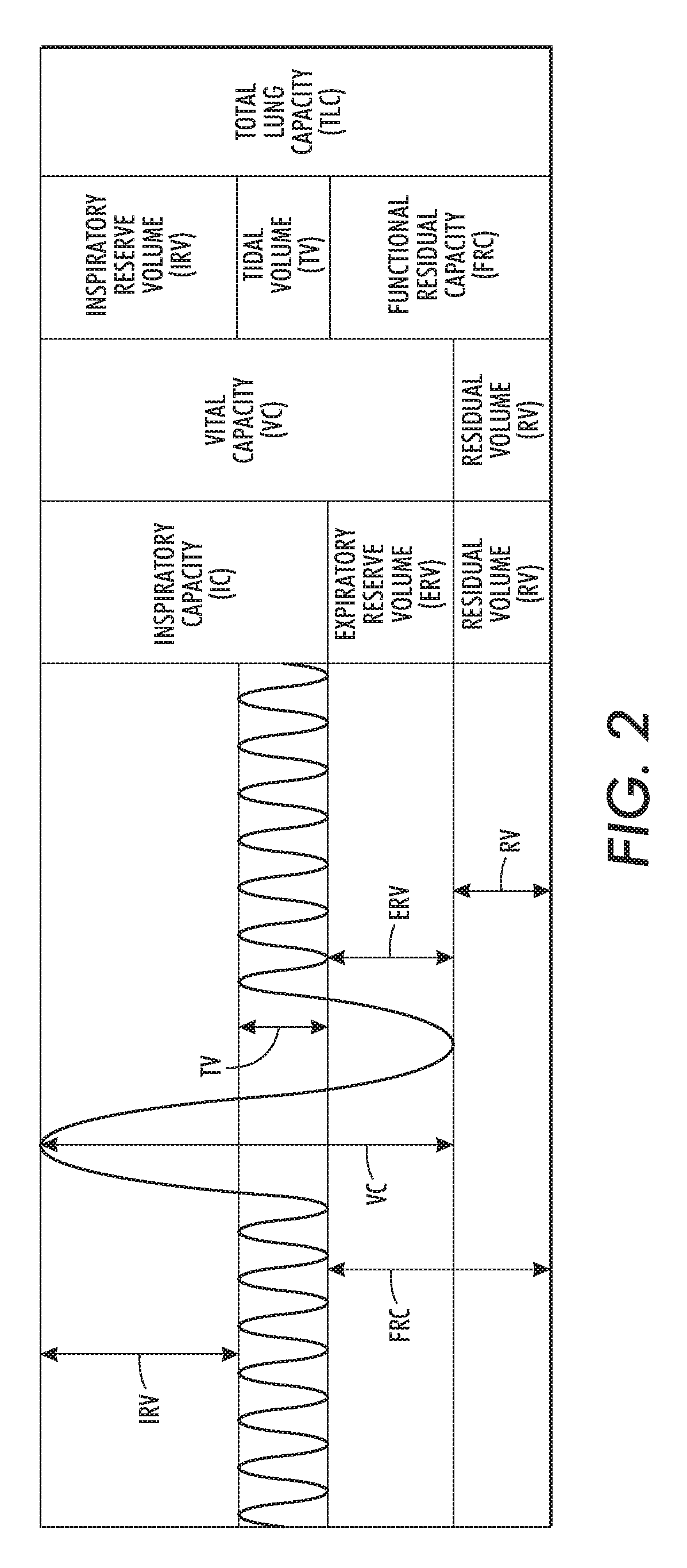Processing a video for respiration rate estimation
a technology of respiration rate and video processing, applied in the field of systems and methods for estimating respiration rate, can solve the problems of further failure, patient discomfort, dependency, and even more likely to suffer from the adverse effects of continued monitoring of elderly patients and neo-natal infants
- Summary
- Abstract
- Description
- Claims
- Application Information
AI Technical Summary
Benefits of technology
Problems solved by technology
Method used
Image
Examples
Embodiment Construction
[0034]What is disclosed is a system and method for estimating a respiration rate for a subject of interest by analyzing distortions in reflections of structured illumination patterns captured in a video containing a view of that subject's thoracic region.
Non-Limiting Definitions
[0035]A “subject of interest” refers to a subject being monitored for respiratory function such that a respiration rate can be determined for that subject in accordance with the teachings hereof. FIG. 1 shows an anterior (frontal) view 101 of an adult human as well as a posterior (rear) view 102. Target region 103 outlines the subject's anterior thoracic region. Target region 104 outlines the subject's posterior thoracic region. A target region, as used herein, also refers to any view of a region of the subject's body which performs a respiratory function. It should be appreciated that the use of the terms “human”, “person”, or “patient” herein is not to be viewed as limiting the scope of the appended claims ...
PUM
 Login to View More
Login to View More Abstract
Description
Claims
Application Information
 Login to View More
Login to View More - R&D
- Intellectual Property
- Life Sciences
- Materials
- Tech Scout
- Unparalleled Data Quality
- Higher Quality Content
- 60% Fewer Hallucinations
Browse by: Latest US Patents, China's latest patents, Technical Efficacy Thesaurus, Application Domain, Technology Topic, Popular Technical Reports.
© 2025 PatSnap. All rights reserved.Legal|Privacy policy|Modern Slavery Act Transparency Statement|Sitemap|About US| Contact US: help@patsnap.com



